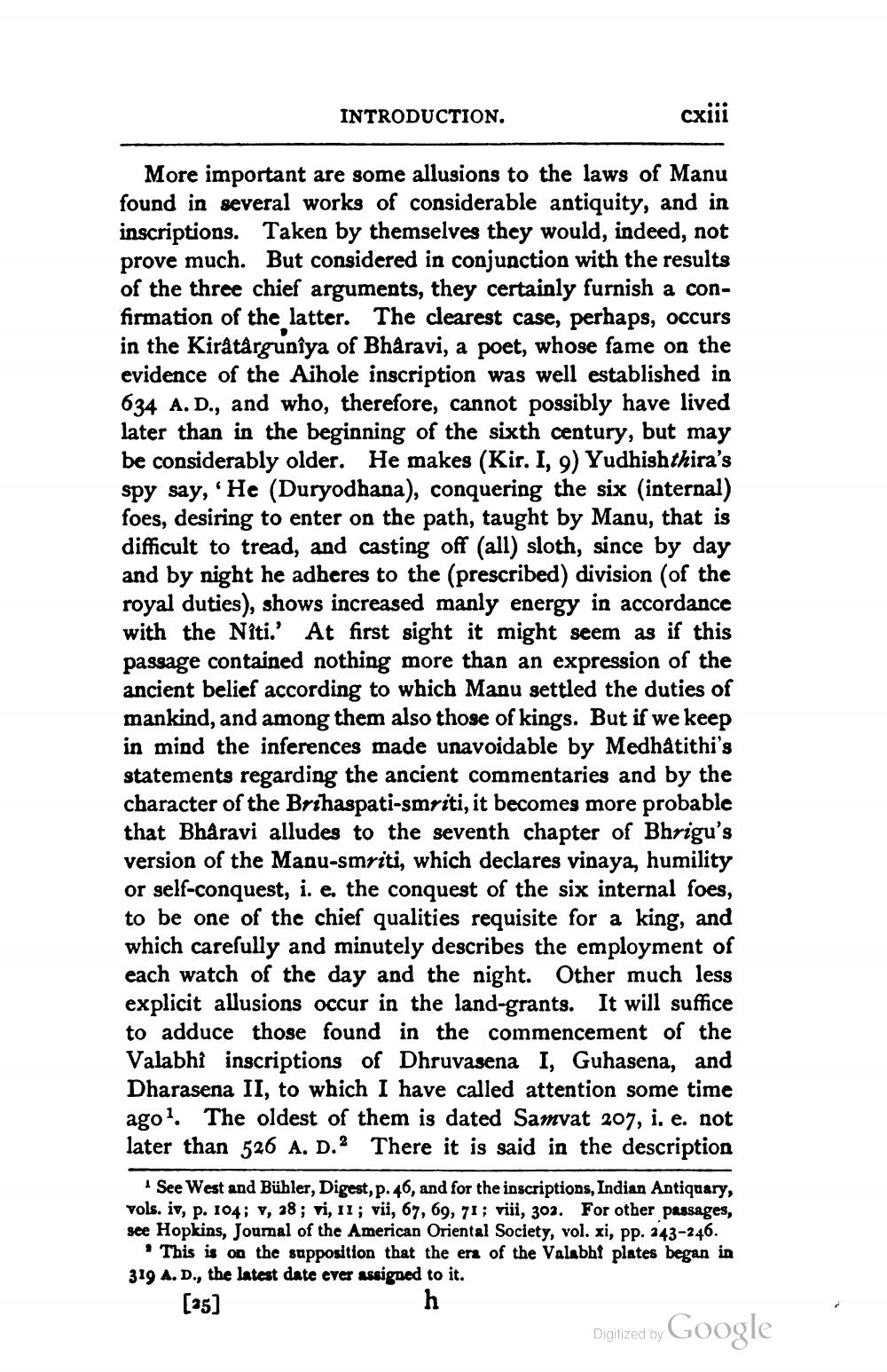________________
INTRODUCTION.
cxiii
More important are some allusions to the laws of Manu found in several works of considerable antiquity, and in inscriptions. Taken by themselves they would, indeed, not prove much. But considered in conjunction with the results of the three chief arguments, they certainly furnish a confirmation of the latter. The clearest case, perhaps, occurs in the Kirâtârgunîya of Bharavi, a poet, whose fame on the evidence of the Aihole inscription was well established in 634 A. D., and who, therefore, cannot possibly have lived later than in the beginning of the sixth century, but may be considerably older. He makes (Kir. I, 9) Yudhishthira's spy say, 'He (Duryodhana), conquering the six (internal) foes, desiring to enter on the path, taught by Manu, that is difficult to tread, and casting off (all) sloth, since by day and by night he adheres to the (prescribed) division (of the royal duties), shows increased manly energy in accordance with the Niti.' At first sight it might seem as if this passage contained nothing more than an expression of the ancient belief according to which Manu settled the duties of mankind, and among them also those of kings. But if we keep in mind the inferences made unavoidable by Medhâtithi's statements regarding the ancient commentaries and by the character of the Brihaspati-smriti, it becomes more probable that Bharavi alludes to the seventh chapter of Bhrigu's version of the Manu-smriti, which declares vinaya, humility or self-conquest, i. e. the conquest of the six internal foes, to be one of the chief qualities requisite for a king, and which carefully and minutely describes the employment of each watch of the day and the night. Other much less explicit allusions occur in the land-grants. It will suffice to adduce those found in the commencement of the Valabhi inscriptions of Dhruvasena I, Guhasena, and Dharasena II, to which I have called attention some time ago1. The oldest of them is dated Samvat 207, i. e. not later than 526 A. D.2 There it is said in the description
See West and Bühler, Digest, p. 46, and for the inscriptions, Indian Antiquary, vols. iv, p. 104; v, 28; vi, 11; vii, 67, 69, 71; viii, 302. For other passages, see Hopkins, Journal of the American Oriental Society, vol. xi, pp. 243-246.
This is on the supposition that the era of the Valabhi plates began in 319 A. D., the latest date ever assigned to it.
[25]
h
Digitized by Google




